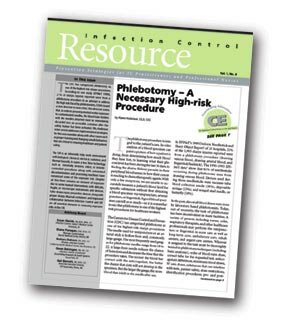
Safe Practices for Health Care Providers
and Patients with Diabetes Mellitus
Vicki L. Kraus, PhD, ARNP, CDE, and Sherry A. David, RN, BS, CIC
Currently an estimated 23.6 million people, or 7.8 percent of the US population, have diabetes. A comparison of prevalence data from 2002 suggests that the net number of patients with diabetes is growing by approximately 1 million per year. Of this number, 17.9 million have been diagnosed, and an additional 5.7 million are undiagnosed. Approximately 186,300 people aged younger than 20 years have either type 1 or type 2 diabetes; approximately 23.5 million, or 10.7% of all people aged 20 or older, have diabetes; and about 12.2 million, or 23.1% of people aged 60 or older, have diabetes. In 2007, 1.6 million new cases of diabetes were diagnosed in people aged 20 years and older.1
Furthermore, there are 57 million people with pre-diabetes, a condition in which blood sugars are above normal but not high enough to merit a diagnosis of diabetes.2 Individuals with pre-diabetes have been found to be at risk for developing type 2 diabetes at a rate of 10% per year if preventive lifestyle interventions are not implemented.3 These statistics indicate that it is likely that a significant number of patients who are hospitalized will have diabetes, either diagnosed or undiagnosed.
Symposium
Mycobacterium Tuberculosis: A Review
Nicole Gerdts, BSN, RN, CIC, and Lisa Caffery, MS, BSN, RN, BC, CIC
Tuberculosis (TB) is a Communicable disease caused by Mycobacterium tuberculosis (Mtb) or the tubercle bacillus, which is spread from person to person through the air. TB usually affects the lungs but can also affect other parts of the body, such as the brain, kidneys, or spine. Left untreated, TB can be fatal.
